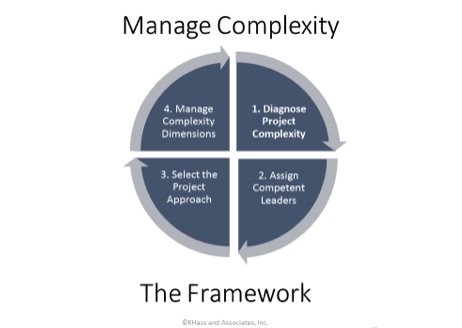What is the makeup of a complex project? Complex projects could be viewed as complex due to budget and team size, strategic viewpoints, stakeholder engagement, and impact of dedicated teams doing project based work that may span from one to five years with extensions. Managing a complex project presents a series of challenges of greater magnitude than found in typical project management.
Project complexity really has no boundaries from small to large projects. Of course, your project could be too complex, but that’s a subject for a different discussion.
What is Project Complexity?
In Managing Project Complexity Part 1, an article by Kitty B. Haas, a project complexity consultant, Australia was determined as a leader in complex project management standards (CPM).
According to Queensland University of Technology (QUT), Brisbane Australia, the CPM strategic partner of the Australian Government’s Defense Materiel Organization (DMO), complex projects are those that:
- Are characterized by uncertainty, ambiguity, dynamic interfaces and significant political or external influences; and/or
- Usually run over a period which exceeds the technology cycle time of the technologies involved; and/or
- Can be defined by effect, but not by solution
What Makes a Project Complex?
As a practitioner, you’d expect that over the years you could clearly define complexity and identify a project that was going to be complex. It’s not that simple.
Haas notes some of the causes of project complexity include:
- Details – number of variables and interfaces
- Ambiguity – lack of awareness of events and causality
- Uncertainty – inability to pre-evaluate actions
- Unpredictability – the inability to know what will happen
- Dynamics – rapid rate of change
- Social structure – numbers and types of interactions
- Interrelationships – many interdependencies and interconnections exist
Is There a Working Project Complexity Model?
Haas describes her comprehensive project complexity model in Living on the Edge Managing Project Complexity Part 2. She states to first focus on what is called a project “complexity mindset,” which she has identified below:
- Conducting enterprise analysis during the study phase of a project
- Preparing the business case for a new project proposal

- Conceptualizing and architecting the solution
- Initiating and planning a new project
- Initiating and planning a new major phase/release of a project
- Recovering a troubled project
- Initiating and planning a new program
- Recovering troubled projects within a program
Haas also lays out a framework described herein to apply complexity thinking for these specific projects noted above. Here are four steps in the complexity management process:
- Diagnose project complexity using the project complexity model
- Assign competent leaders commensurate with the complexity profile
- Select the project approach commensurate with the complexity profile
- Manage complexity dimensions that are present on your project
How Do Project Managers Prepare for Managing a Complex Project?
Project Managers need to focus on their personal development today in order to step up to the challenges that 21st century projects will demand. Project/Program managers need to not only focus on their foundational skills as well as increase their knowledge in leadership and business strategy as the global marketplace continue to become increasingly complex.
Every project manager should have a personal growth and development or at least a training plan or a well-defined career path in their organization just for project managers; managing complex projects will be a requirement for the future of most organizations.
There are many ways a project manager can prepare to manage a complex project through mentoring, on the job and advanced training. PMI’s Talent Triangle will help bring focus on where project managers should leverage their training to attain competencies and seek out mentoring from internal or external experts to lead 21st century projects in three areas of focusof the talent triangle: Technical Project Management, Strategic Business Management and Leadership.
What Does Project Success Look Like in a Complex World?
Project complexity will bring about change for many organizations that may change their culture, business processes, business strategy, organizational structures, corporate governance, communication methods, project methodologies, and more. Organizations must change from traditional thinking to, as Haas suggests, a “shared project leadership model” that focuses on collaboration, teams, and leadership to help project managers be more successful and add value in our complex world.
What would the makeup of this project leadership model look like? According to Haas, it is as follows:
- A project leadership team is that is small (four to six members), multi-disciplined, highly skilled, dedicated to the project full time, and co-located.
- Core leadership team shares responsibility for guiding the project, each taking the lead when their expertise is needed most.
Clearly, complex projects are just that: too complex for the traditional project manager and require professional leadership from several key experts.
No matter how complex your project is, you really need tools that help you simplify the process. ProjectManager is an online project and portfolio management tool designed to help PMs and PMOs tracking multiple projects, with simple to use collaboration features that extend across the entire organization. Learn more with this free trial.



